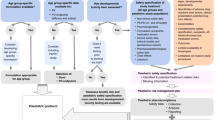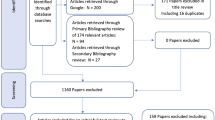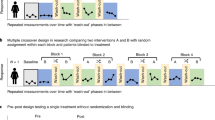Abstract
Background
Enrolling children in clinical trials typically requires parental or guardian permission and, when appropriate, child assent. Aligning requirements across jurisdictions would facilitate multisite pediatric trials. Guidance from the International Council for Harmonisation of Technical Requirements for Pharmaceuticals for Human Use (ICH) is the best candidate for a global standard but would benefit from additional specification.
Methods
Ethical analysis of ICH guidance for permission and assent for pediatric trials, with recommendations for clarification.
Results
ICH guidance regarding permission and assent would be enhanced by additional detail in the following areas: (1) what information should be provided to parents, guardians, and children considering a trial, and how that information should be provided; (2) the definition of “assent,” the criteria for when assent should be required, and the need to include children in discussions even when assent is not mandated; (3) criteria for requiring children’s signatures indicating agreement; (4) greater specificity regarding children’s right to decline or withdraw; and (5) clarification of when children’s wish to decline or withdraw from participation may be overridden and of what the overriding process should entail.
Conclusion
ICH guidance provides a global standard for decision making regarding children’s participation in trials. Several clarifications would facilitate the conduct of multinational pediatric research.
Impact
-
Enrolling children in clinical trials requires the permission of a parent/guardian ± the assent of the minor.
-
Differing global regulatory requirements for enrolling children complicate the conduct of multicenter and multinational trials.
-
The authors identify points of ambiguity and/or contradiction in the International Council for Harmonization guidelines and offer recommendations for a common ethical platform for conducting global pediatric research.
This is a preview of subscription content, access via your institution
Access options
Subscribe to this journal
Receive 14 print issues and online access
$259.00 per year
only $18.50 per issue
Buy this article
- Purchase on Springer Link
- Instant access to full article PDF
Prices may be subject to local taxes which are calculated during checkout
Similar content being viewed by others
Data availability
Any data provided in this manuscript are available in the references cited.
References
Nuffield Council on Bioethics. Children and Clinical Research: Ethical Issues (Nuffield Council on Bioethics, London, 2015, accessed 29 December 2022); https://www.nuffieldbioethics.org/assets/pdfs/Children-and-clinical-research.pdf.
Youthpolicy.org. Youthpolicy.Org Factsheets (accessed 29 December 2022); https://www.youthpolicy.org/factsheets/.
United States Centers for Disease Control and Prevention. State Laws That Enable a Minor to Provide Informed Consent to Receive HIV and STD Services (accessed 29 December 2022); https://www.cdc.gov/hiv/policies/law/states/minors.html.
World Medical Association. Declaration of Helsinki: ethical principles for medical research involving human subjects. JAMA 310, 2191–2194 (2013).
Council for International Organizations of Medical Sciences. International Ethical Guidelines for Health-Related Research Involving Humans (Council for International Organizations of Medical Sciences, Geneva, Switzerland, 2016, accessed 29 December 2022); https://cioms.ch/wp-content/uploads/2017/01/WEB-CIOMS-EthicalGuidelines.pdf.
Blake, V., Joffe, S. & Kodish, E. Harmonization of ethics policies in pediatric research. J. Law Med Ethics 39, 70–78 (2011).
International Council for Harmonisation of Technical Requirements for Pharmaceuticals for Human Use. Addendum to Ich E11: Clinical Investigation of Medicinal Products in the Pediatric Population (accessed 29 December 2022); https://database.ich.org/sites/default/files/E11_R1_Addendum.pdf (2017).
United States Food and Drug Administration. Informed Consent: Draft Guidance for Irbs, Clinical Investigators, and Sponsors (accessed 29 December 2022); https://www.fda.gov/regulatory-information/search-fda-guidance-documents/informed-consent#_ftnref39 (2014).
United States Food and Drug Administration. Protection of Human Subjects. 21CFR503(n)1996 (accessed 29 December 2022); https://www.accessdata.fda.gov/scripts/cdrh/cfdocs/cfCFR/CFRSearch.cfm?fr=50.3.
Pharmacy and Poisons Board, Kenya Ministry of Health. Guidelines for Conduct of Clinical Trials in Kenya (accessed 29 December 2022); https://africacheck.org/sites/default/files/media/documents/2021-03/Guidelines%20for%20Conduct%20of%20Clinical%20Trials%20in%20Kenya%202nd%20Revision.pdf (2019).
Philippine Health Research Ethics Board. National Ethical Guidelines for Health and Health-Related Research 2017 (accessed 29 December 2022); http://49.231.15.21/deptw13/upload/files/hercF256312041721022781.pdf (2018).
Joffe, S. et al. Involving children with cancer in decision-making about research participation. J. Pediatr. 149, 862–868 (2006).
Ungar, D., Joffe, S. & Kodish, E. Children are not small adults: documentation of assent for research involving children. J. Pediatr. 149, S31–S33 (2006).
Faden, R. R. & Beauchamp, T. L. A History and Theory of Informed Consent (Oxford University Press, 1986).
Katz, A. L., Webb, S. A. & Committee on Bioethics of the American Academy of Pediatrics. Informed consent in decision-making in pediatric practice. Pediatrics 138, e20161485 (2016).
Acknowledgements
The authors are grateful to Walker Morrell, MBioethics, for research assistance and support and to Katharine Wright, MA, and Mr. Morrell for their thoughtful contributions to discussions that informed this article.
Author information
Authors and Affiliations
Contributions
All authors contributed to the research and arguments presented in this article. S.J. wrote the first draft of the manuscript; all authors revised it critically for important intellectual content. All authors approved the final draft of the manuscript.
Corresponding author
Ethics declarations
Competing interests
S.J. reports that he received research funding from Pfizer through the University of Pennsylvania until May 2020, and is a member of a data and safety monitoring board for CSL Behring. A.J.A. reports that he was employed by Eli Lilly and Company during the preparation of this manuscript but has since retired. J.M.D., E.K., V.A.M., S.Z.K., G.M.V.K., J.P., L.D.S., and B.E.B. have no financial relationships to report.
Additional information
Publisher’s note Springer Nature remains neutral with regard to jurisdictional claims in published maps and institutional affiliations.
Rights and permissions
Springer Nature or its licensor (e.g. a society or other partner) holds exclusive rights to this article under a publishing agreement with the author(s) or other rightsholder(s); author self-archiving of the accepted manuscript version of this article is solely governed by the terms of such publishing agreement and applicable law.
About this article
Cite this article
Joffe, S., Allen, A.J., Davis, J.M. et al. Establishing a global regulatory floor for children’s decisions about participation in clinical research. Pediatr Res 94, 462–465 (2023). https://doi.org/10.1038/s41390-023-02483-8
Received:
Revised:
Accepted:
Published:
Issue Date:
DOI: https://doi.org/10.1038/s41390-023-02483-8



